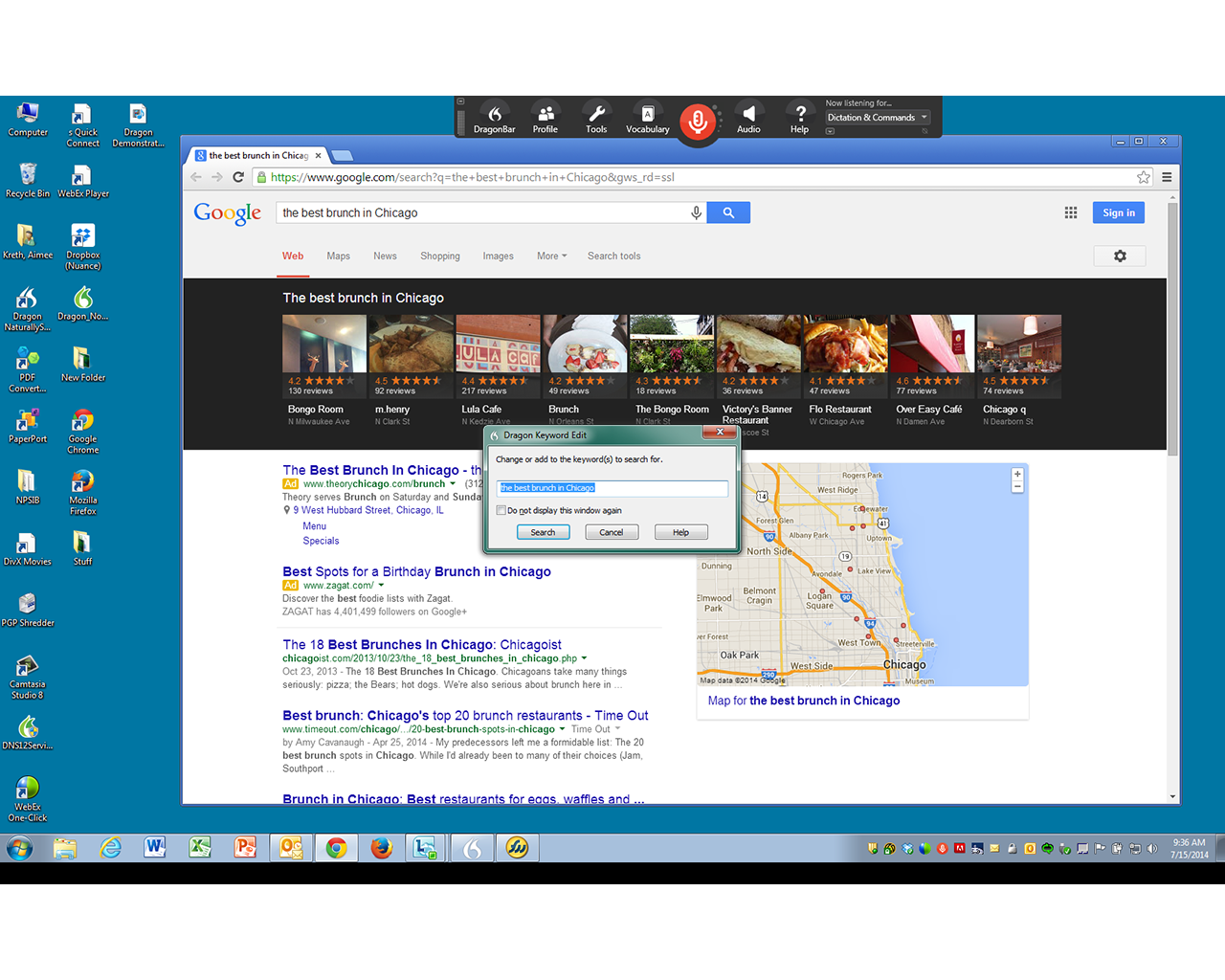

When I describe speech recognition to people who are not familiar with it, I am often met with puzzled looks when I explain that Dragon is challenging to learn, and that some folks spend months or years mastering it. “Isn't speech a natural way to communicate?” Talking slowly might help non-native speakers understand, but it won't help Dragon. Perhaps they liken Dragon to a non-native language speaker. Many new users are surprised to learn that speaking too slowly degrades performance.

For example, saying “minimize” by itself may cause the current window to minimize! I find that speaking quickly and at length actually boosts accuracy, and avoids the surprises that result from saying one or two words at a time. Fast talking is not a problem provided I articulate every word clearly and distinctly. I stack the odds in my favour when I dictate by thinking about what I want to say, and then blurting out the idea in a single breath. Dragon is always just guessing - it's a probabilistic machine. More words means more context and better guesses. Context matters: Dragon guesses each word in relation to its guesses for adjacent words. Instead of understanding language, Dragon applies complex pattern-matching algorithms to audio signals, and outputs the most likely words the signals contain.ĭragon's accuracy peaks when a person speaks in long phrases. Dragon doesn't know the meaning of words, and it certainly doesn't understand language - at least, not as humans do.ĭragon is a transcription machine “made” of mathematical and statistical rules held together with logic. When everything is going well, Dragon seems to understand every word.īut Dragon understands zilch. Four common misconceptions about Dragon 1. In this article, I will review four misconceptions that may predispose a person to abandon Dragon. Over the years I have noticed that new users often have unrealistic expectations about Dragon. For example, Dragon 15 works nicely in Internet Explorer, less well in Firefox and Chrome, and hardly at all in Edge. Although fast and accurate, it is not without limitations, problems, and bugs. I don't rely on Dragon for everything, but I do use it almost every day. I use Dragon to write short documents and emails, format and revise text, enter data into spreadsheets, browse the web, and more.
#OLD DRAGON NATURALLY SPEAKING SOFTWARE WINDOWS#
The following descriptions apply primarily to the Windows version.)

(Although Dragon for Windows and MacOS use the same underlying recognition engine and are equally accurate, the Windows version has more features and is more customizable.
#OLD DRAGON NATURALLY SPEAKING SOFTWARE MAC#
The most versatile and accurate product for Windows and Mac computers is Dragon Professional, aka Dragon. But with the buzz around voice-enabled digital assistants like Siri, Google Assistant, Alexa, and Cortana, people are discovering that speech recognition exists today. Undoubtedly, ideas about speech recognition took root in the popular imagination through science fiction. employee Chuck Rogers estimated that 15% to 20% of computer owners got consistent and productive results from speech recognition, but admitted the proportion may be “closer to 5%.” He suggested two reasons: the learning curve, while not as steep as before, is still very steep and the disappointment people feel when they realize that “speech recognition just doesn't work like it does on Star Trek.” But I am also aware that many people who could benefit from the technology use it for a short period, and then give up in frustration. I suspect that a larger percentage of new users stick with it. Heidi Horstmann Koester, in Abandonment of Speech Recognition by New Users (2003), reported that only one of the eight participants in her study was still using a speech recognition product after six months.ĭuring the 15 years since Koester's paper, speech recognition technology has greatly improved. But not everyone takes to the technology as I did. My longstanding use makes me, I suppose, an early adopter. For those tasks, I find that speech recognition is the best tool. There are many tasks - although not all - that I perform faster and easier by voice than via keyboard, mouse, or touch screen. So voice control of computers is second nature to me. I have relied on speech recognition technologies for 25 years. This article was originally published on LinkedIn in February 2018.


 0 kommentar(er)
0 kommentar(er)
